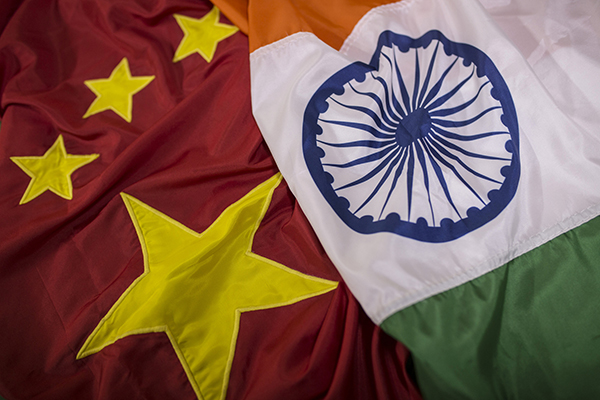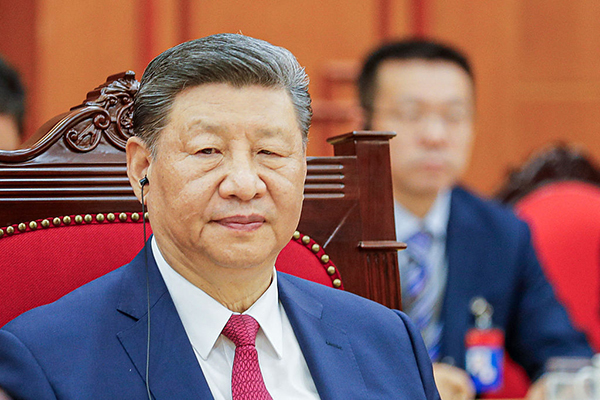China vs India, which market should investors pick?
Ceri Jones pits the two countries against each other to determine which one fits the bill for adventurous investors.
8th May 2025 10:58
by Ceri Jones from interactive investor

Whether to invest in China or India is a question fund managers are often asked, particularly since the dramatic shift in the Asian market last year, and Trump’s tariff rhetoric.
The first point to make is that starting valuations matter, particularly in Asian markets. India’s stock valuations are still quite rich, at around 20x forward P/E. In contrast, China remains one of the cheapest global markets, trading at just 11x forward P/E, a near all-time valuation discount relative to emerging markets.
- Invest with ii: Buy Investment Trusts | Top UK Shares | Open a Trading Account
However, India has always been expensive relative to other emerging markets, which is partly a tribute to its political infrastructure. “India possesses the soft infrastructure of a mature, stable democracy with strong separation of powers between the executive, legislature, and judiciary,” says Ayush Abhijeet, investment director, Ashoka India Equity Investment Ord (LSE:AIE).
He adds: “It has an independent central bank and there is rule of law with strong protection and enforcement of property rights. Investors believe that this institutional separation of powers – effectively a system of checks and balances – and efficient execution of contracts is a crucial attribute that makes India attractive compared to several other emerging markets.”
With trade tensions rising, India’s strong domestic market and relative insularity also offers protection.
Murali Yerram, portfolio manager of Franklin India fund, points out that India’s exposure to external trade risks is a factor in its favour.
He says: “The country’s trade deficit with the US, at $45 billion, is far smaller than many other major economies, with a significant portion of the deficit (around 25%) driven by generic pharmaceutical exports. This limited exposure to potential trade barriers provides India with an added layer of resilience in the face of global disruptions.”
In comparison, China is far more focused on exports and the authorities have been fighting back at Trump’s tariffs by restricting exports of rare earths and a charm campaign by leader Xi Jinping who is visiting key trading partners in Southeast Asia to shore up alliances.
“China is the world’s manufacturer, whether Mr Trump likes it or not, having moved up the value chain to high-end manufacturing,” says Edward Allen, private client investment director, Tyndall Investment Management. “Its population is highly educated and the innovation economy is flourishing.”
Over time, however, China will need to move to a more sustainable consumption model and the government and ruling Communist Party’s joint 30-point plan to “expand domestic demand in all directions” aims to achieve this by boosting incomes, maintaining property prices and providing childcare subsidies.
“After decades of an investment-driven growth model and the rise in debt, consumer spending will have to drive growth,” says James Donald, lead portfolio manager on emerging market equities, Lazard Asset Management. “Stronger domestic demand in China could also counterbalance any further decline in exports to the US, either due to tariffs or cooling growth.”
India is where China was a decade ago
India’s fast-growing economy is fuelled by its huge youth population, its expanding middle class, and rising incomes. The relative maturity of the two markets suggests that India is where China was a decade ago. However, a bifurcation between the successful skilled sector and the huge unskilled, rural segment, which has not recovered since the pandemic, could prove a drag on growth.
“India’s post-Covid recovery was two-paced where high-end consumption growth outpaced lower-end consumption,” says George Efstathopoulos, multi-asset portfolio manager at Fidelity International. “The demand growth in the premium segment is slackening, and the government is curtailing its capex to support the lower income segment. As a result, India’s GDP growth is slowing, and corporate earnings are witnessing downgrades.”
He adds: “We believe that the rebalancing of the economy may still have some way to go. With risk of further slowdown in GDP, it is important to remain selective, particularly in the more expensive parts of the markets such as consumer, industrial and utility sectors.”
- ISA ideas: around the world in 10 funds in 2025
- Sign up to our free newsletter for investment ideas, latest news and award-winning analysis
While China was soaring earlier this year, it was easy to forget that until recently, it was widely considered un-investable. Economic data has improved since the fiscal stimulus in Q4 2024 with growth of 5.4% in the first quarter year-on-year, which at least demonstrates that fiscal policies work even amid low consumer confidence. Nonetheless, the narrative remains fairly negative, topped by uncertainty over tariffs, the demographic time bomb and whether the property deleveraging cycle is over.

China's President Xi Jinping in Hanoi in April 2025. Photo by MINH HOANG/POOL/AFP via Getty Images.
“There is no getting away from China's serious domestic economic challenges such as debt, demographics, and the spectre of deflation,” says Douglas Turnbull, research analyst at Janus Henderson Investors. While these challenges have increased China's cost of equity and depressed valuations, Turnbull says that “market sentiment had overshot to the downside and was undervaluing policymakers' ability to improve the outlook, presenting attractively priced investment opportunities.”
Turnbull advises investors to avoid companies with high leverage, state involvement, or direct sanctions risk, but acknowledge China's leadership in critical technological fields, such as the solar supply chain and EV manufacturing.
The emergence of Chinese artificial intelligence (AI), in particular Deepseek, has done wonders to challenge the view that China lags the US on the tech front. A meeting in February between Chinese officials and private tech companies also demonstrates that the government is embracing tech to improve productivity.
- Fund Battle: are there alternatives to Jupiter India?
- Investment outlook as US/China force world to pick sides
Undoubtedly, there is a strong case for holding both the India and China markets as they both enjoy huge domestic demand but have independent and distinct drivers and economic policies.
One way to compare the two is to ask what discount rate would be needed to deliver today’s index levels based on reasonable assumptions about future cash flows, and on this basis investors’ expected rate of return from India is below 3%, versus China’s at close to 6%, says Chris Carter, investment manager in the Jupiter Origin team.
“While that gap is slightly narrower now than it was six months ago, it remains historically wide, suggesting China might be the better bet over the medium term. Of course, the geopolitical, domestic political, and economic risks around China may well now justify a discount.”
Funds for single-country exposure
On the other hand, India stands out as an under-researched and inefficient market where active managers can outperform the benchmark. More than 500 of its listed companies have a market cap of over a billion dollars, nearly 5% of all such companies globally. In contrast to many major emerging markets dominated by sectors such as tech hardware or commodities – which tend to be highly cyclical – India has the most diversified sectoral mix.
Allen highlights KraneShares CSI China Internet ETF GBP (LSE:KWBP) as a good way of buying into a China recovery. He owns the Fidelity China Special Situations (LSE:FCSS) trust for broad China exposure at a discount, the Ashoka India Equity Investment Ord (LSE:AIE) investment trust for mid-cap Indian growth, and the Stewart Investors Asia Pacific Leaders fund for quality biased Asian exposure with a high India weighting.
Other options for India include iShares MSCI India ETF USD Acc GBP (LSE:IIND) and Stewart Investors Indian Subcontinent fund.
For China, HSBC MSCI China ETF GBP (LSE:HMCH) offers broad exposure. It tracks the up and down fortunes of around 580 large and mid-cap China-listed companies.
In practice, international capital has moved from one to the other, with one country re-rating when the other de-rates, suggesting that holding both countries is an effective diversification strategy.
Carter concludes: “They exhibit markedly different patterns of short- and medium-term performance - the average three-year correlation between China and India is around 0.3 or less.
“However, for now at least, China offers better diversification versus developed markets: its recent correlation with the MSCI World Index has been around 0.2. If anything can be said for certain about China, it is a diversifier.”
These articles are provided for information purposes only. Occasionally, an opinion about whether to buy or sell a specific investment may be provided by third parties. The content is not intended to be a personal recommendation to buy or sell any financial instrument or product, or to adopt any investment strategy as it is not provided based on an assessment of your investing knowledge and experience, your financial situation or your investment objectives. The value of your investments, and the income derived from them, may go down as well as up. You may not get back all the money that you invest. The investments referred to in this article may not be suitable for all investors, and if in doubt, an investor should seek advice from a qualified investment adviser.
Full performance can be found on the company or index summary page on the interactive investor website. Simply click on the company's or index name highlighted in the article.